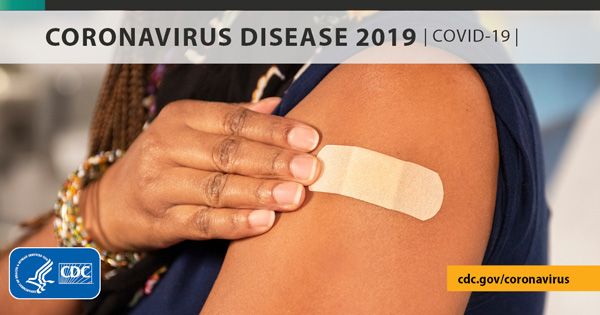Bit more detail, I believe, in this article from Fox
The guidance is the first from the CDC on those fully vaccinated against the coronavirus
The Centers for Disease Control and Prevention (CDC) Monday released highly anticipated guidance on practices considered safe for those who are fully
vaccinated against the novel
coronavirus, relating to gatherings, quarantine and testing. Of note, the federal health agency said that those who are fully vaccinated can spend time with unvaccinated people indoors, with no mask, so long as those who are unvaccinated are at low-risk for severe COVID-19.
"As vaccinations increase, this guidance represents a first step toward returning to everyday activities in our communities, and CDC will update these recommendations as more people are vaccinated, rates of COVID-19 in the community change, and as additional science and evidence become available," the CDC said in a press release regarding the guidance.
Dr. Rochelle Walensky, the director of the federal health agency, also announced the guidelines at a White House press conference on Monday morning.
"We’ve been through a lot this past year, and with more and more people getting vaccinated each day, we are starting to turn a corner," said Walensky. "And as more Americans are vaccinated, a growing body of evidence now tells us that there are some activities that fully vaccinated people can resume at low risk to themselves."
According to data compiled by the CDC, 9.2% of the U.S. population is now fully vaccinated, and 17.7% have received at least one dose.
Two weeks after the second dose, or the single-dose for those receiving a vaccine developed by
Johnson & Johnson, fully vaccinated persons can safely gather inside with other fully vaccinated people without wearing face masks or physical distancing, the CDC said, calling these indoor gatherings "likely low risk."
Also, indoor gatherings involving fully vaccinated people and unvaccinated people from a single household at low-risk for severe COVID-19, with no mask use, presents a "low risk" of virus transmission.
"The level of precautions taken should be determined by the characteristics of the unvaccinated people, who remain unprotected against COVID-19," the CDC advises.
As such, if an unvaccinated person is at high-risk for severe COVID-19, then the agency advises mask use, physical distancing and outdoor visits or gathering in a space with proper ventilation.
As the size of gatherings increase and involves additional households, the risk also increases. In gatherings with fully vaccinated people and unvaccinated people from multiple households, everyone should wear a mask and practice distancing, per the guidance.
Further, regardless of vaccination status, everyone should avoid medium-to-large-sized gatherings indoors and follow local guidance on related restrictions. If fully vaccinated people decide to partake, they should wear masks, practice distancing and wash hands often.
Additionally, going to the gym and dining inside poses a smaller infection risk for fully vaccinated people.
"However, precautions should still be taken as transmission risk in these settings is higher and likely increases with the number of unvaccinated people present," the CDC says.
Therefore, in public areas, fully vaccinated people should still wear fitted masks and practice physical distancing and other mitigation measures (avoiding crowdings, hand hygiene, covering coughs) as a precaution, the CDC says.
ISOLATION, QUARANTINE, TESTING
The CDC says fully vaccinated people face a "low" risk of infection, but should any COVID-19-related symptoms arise, the agency advises isolating themselves from others, and to seek out a clinical evaluation and testing.
"Fully vaccinated people should not visit or attend a gathering if they have tested positive for COVID-19 in the prior 10 days or are experiencing
COVID-19 symptoms, regardless of vaccination status of the other people at the gathering," per the guidelines.
On the other hand, the CDC says fully vaccinated people don’t have to quarantine and undergo testing after a known exposure if they aren’t experiencing any symptoms. In this case, people should monitor for symptoms 14 days following the exposure. However, congregate settings like correctional facilities should quarantine for 14 days following exposure because these settings involve a higher risk of virus spread given difficulty maintaining distance.
Finally, fully vaccinated people working in meat or poultry processing plants, for instance, were not recommended to enter quarantine after exposure for asymptomatic cases, though testing was still encouraged.
"We know that people want to get vaccinated so they can get back to doing the things they enjoy with the people they love," said Walensky, in the release. "There are some activities that fully vaccinated people can begin to resume now in the privacy of their own homes. Everyone – even those who are vaccinated – should continue with all mitigation strategies when in public settings. As the science evolves and more people get vaccinated, we will continue to provide more guidance to help fully vaccinated people safely resume more activities."
Walensky echoed this during the White House press briefing on Monday, noting that the guidance will be updated as more Americans receive the vaccine.
"It's important to note that this is initial guidance. The science of COVID-19 is complex and our understanding of the virus continues to rapidly evolve. The recommendations issued today are just a first step. As more people get vaccinated and the science and evidence expands, and as the disease dynamics of this country change, we will continue to update this guidance," she said.
